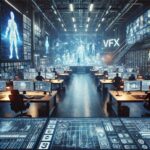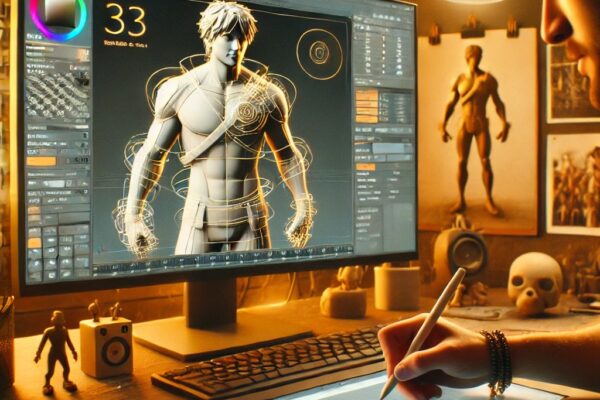Creating Stunning Product Visualizations with 3D Modeling
In today’s digital age, brands need visually compelling content to stand out. Traditional photography is no longer the only way to showcase products—3D modeling and rendering have revolutionized product visualization, offering photo-realistic images with unmatched flexibility. Whether you’re in e-commerce, advertising, or product design, 3D modeling can elevate how customers perceive and interact with your products.
Let’s dive into how 3D modeling enhances product visualization and explore best practices for creating stunning visuals that captivate audiences.
Why Use 3D Modeling for Product Visualization?
1. Hyper-Realistic Visuals
3D modeling allows brands to create high-resolution, detailed renderings that match or even surpass real-life photography. With advanced rendering techniques, products can be showcased in different:
Materials & Textures – From glossy to matte finishes, wood grains to metallic surfaces.
Lighting Environments – Simulating natural daylight, studio lighting, or dramatic shadows.
Angles & Perspectives – Presenting the product from any viewpoint, even exploded views to highlight intricate parts.
🔹 Example: Luxury brands use 3D visualization to highlight the intricate details of watches, jewelry, and electronics without the need for costly studio setups.
2. Cost & Time Efficiency
Traditional product photography requires expensive studio setups, multiple prototypes, and complex post-production edits. 3D modeling eliminates these challenges:
No need for physical prototypes—designs can be tested and adjusted digitally.
Quick modifications—change colors, textures, or branding in just a few clicks.
Faster production timelines—eliminate delays due to reshoots or weather conditions.
🔹 Example: Furniture brands like IKEA use 3D rendering to create entire catalogs without physically manufacturing or photographing each item.
3. Interactive & Immersive Experiences
With Augmented Reality (AR) and Virtual Reality (VR) becoming mainstream, 3D models can be integrated into immersive shopping experiences. Customers can:
Rotate and zoom in on products for a 360-degree view.
Place furniture or appliances in their home using AR apps.
Try out products virtually before making a purchase decision.
🔹 Example: Car manufacturers now provide interactive 3D configurators where customers can customize features and see real-time updates.
How to Create Stunning 3D Product Visualizations
1. Start with High-Quality 3D Modeling
A great visualization starts with a detailed and accurate 3D model. Consider:
✔ Precision in geometry – Ensure accurate proportions and smooth surfaces.
✔ Clean topology – Use optimized meshes for realistic shading and reflections.
✔ Subdivision modeling – Allows for high-resolution details without excessive polygons.
🔹 Tip: Use software like Blender, Maya, or 3ds Max for complex product modeling.
2. Focus on Photorealistic Texturing & Materials
The key to realism lies in textures and material properties. Achieve the best results by:
✔ Using PBR (Physically-Based Rendering) textures for accurate material reflections.
✔ Applying bump maps and normal maps for added surface details.
✔ Ensuring seamless UV mapping to avoid stretching or distortion.
🔹 Tip: Software like Substance Painter helps create high-quality, customizable textures.
3. Master Lighting & Rendering Techniques
Lighting sets the mood and realism of your 3D renders. Popular lighting techniques include:
3-Point Lighting Setup – Key light, fill light, and rim light for balanced illumination.
HDRI Environments – Using high-dynamic-range images to create natural reflections.
Soft Shadows & Global Illumination – Adds depth and realism to the scene.
🔹 Tip: Render engines like V-Ray, Cycles (Blender), or Arnold provide high-end photorealistic output.
4. Post-Processing for Final Touches
Even the best renders can benefit from slight post-production enhancements:
✔ Adjust brightness, contrast, and color grading for a polished look.
✔ Add depth of field, motion blur, or vignette effects for cinematic appeal.
✔ Use compositing software like Adobe Photoshop or After Effects to refine visuals.
🔹 Tip: Keep edits subtle—over-processing can make images look artificial.
Final Thoughts
3D modeling has redefined product visualization, offering unmatched flexibility, cost savings, and immersive experiences. Whether you’re creating stunning advertising visuals, interactive AR experiences, or high-quality e-commerce renders, mastering 3D modeling techniques can set your brand apart.
🚀 Are you ready to transform your product visuals with 3D modeling? Let’s create something extraordinary!
Author











